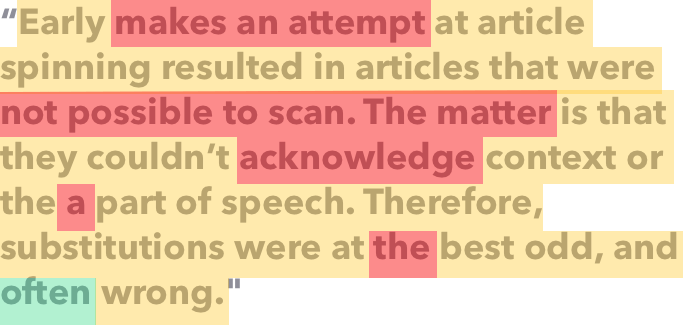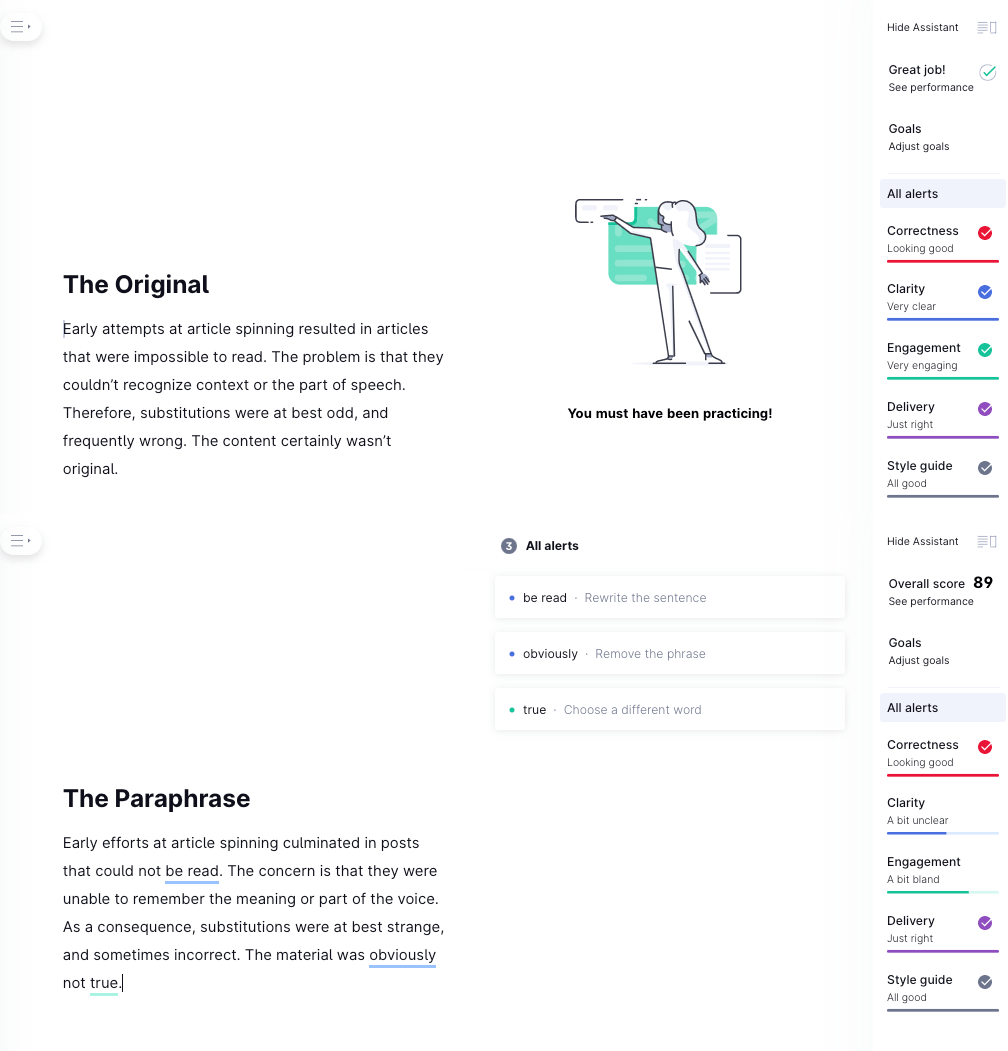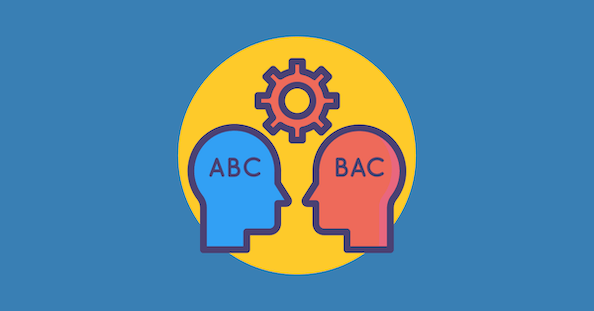If you’ve done any research on natural language generation applications for content marketing, you may have come across article spinning software. Also known as article rewriting, it’s one of those old SEO tactics, like automated backlinking, used for less-than-legitimate (blackhat) purposes.
Natural language generation uses deep learning to create human-like readable text, a unique article based on a language prediction model. Article spinner tools take an original article and produce one or more variations by replacing specific words, phrases, or sentences with alternate versions.
In this post, we look at how spinning software works, their use cases, and how it differs from natural language generation (NLG). There are many reasons why I don’t condone the use of article spinners, so think of this article as a public service announcement.
How Are Article Spinners Used?
The best way to understand articles spinners is by looking at the language used to market these products. Here are a few quotes from sites trying to sell spinner software:
- “Instantly spin unique versions of any articles.”
- “Generate hundreds of new articles in minutes.”
- “Churn out mountains of content.”
- “Creating huge amounts of content to help better rank your sites.”
Some even try to capitalize on the artificial intelligence trend by claiming their software is AI-driven. They describe their product using AI terms and sometimes even resort to making up terms.
“Emulated natural language” has to be my favorite fake term. I kid you not. Somebody made it up, but it wasn’t me! It sounds elaborate but means nothing.
Based on the language used, you can probably guess the type of situation in which article spinners are deployed. Typically they’re used in low-quality sites strictly created for SEO purposes while keeping article writing costs as low as possible.
Creating readable text is low on the priority list for these types of blogs. Instead, their purpose is to create a linking network to boost the ranking of the main “money” site.
Publishing quality content is not the object of this endeavor. “Unique content” is whatever is good enough to pass automated search engine plagiarism checks.
If you’re wondering whether the world wide web really needs more of this content, the answer is no!
How Does an Article Spinner Work?
Compared to NLG, content spinners are primitive. They take a piece of content and create a variation in an attempt to make it appear as though it’s a unique article. This is accomplished by replacing words, phrases, sentences, and occasionally paragraphs with variants.
Early attempts at article spinning resulted in articles that were impossible to read. The problem is that they couldn’t recognize context or the part of speech. Therefore, substitutions were at best odd, and frequently wrong. The content certainly wasn’t original.
Here’s the exact output from an article spinner using the previous paragraph as an example.

Duplicate content is colored yellow. Poor substitutions are colored red. Acceptable substitutions are colored green.
So, 67.5% of the spun article is duplicate content that hasn’t changed from the original. Six out of seven substitutions were of poor quality and only one was acceptable.
Poor-quality derivative content is the hallmark of article spinning.
Although some newer article spinners claim to employ artificial intelligence, that’s really stretching things a bit far. At best, they may be using Google’s Natural Language API to extract tokens and sentences, and for part-of-speech (PoS) tagging. That is part of natural language processing (NLP), but as we’ll see, a lot more is required for natural language generation.
No matter how you look at, article spinning still remains a process of generating derivative works from an original.
Paraphrasing Tools Don’t Paraphrase
Given the negative connotation of article spinning, some article spinner tools have branded themselves as a paraphrasing tool. Don’t be fooled. The paraphrase tools I have seen operate exactly in the manner of article spinners.
See for yourself.

The output above is from a free paraphrasing tool where I used the same original text from the previous section. The highlighted text indicates words that have been substituted.
I ran both the original and the paraphrased version through Grammarly; you can see the result below.

Using this “paraphrasing” tool results in a loss of clarity and engagement. That’s exactly opposite of what paraphrasing is suppose to achieve.
How Does Natural Language Generation Work?
Unlike article rewriting, natural language generation doesn’t require an original piece of content. It creates brand new content instead of rewriting existing articles.
NLG takes either a rule-based approach or relies on statistical language modeling. Either method can leverage NLP and natural language understanding (NLU) technologies to improve the quality of the generated text.
NLP analyzes text using (PoS) tagging and entity recognition, while NLU leverages NLP and deep learning to create semantic models that derive a sense of meaning.
The Difference Between NLG and Article Spinning Software
No matter how advanced article spinners may claim to be, they cannot generate text—only change it. This type of tool requires an existing blog post from which it can only produce a derivative.
They do not create, they merely modify. As such, it’s not a good fit for content marketers looking to scale content production and maintain quality without scaling costs and complexity.
The best of that sorry lot may use some limited natural language processing to make better choices when replacing words. But to call it artificial intelligence is a stretch.
Editor's Note: This is a sponsored blog post from Marketing AI Institute partner MarketMuse.
Stephen Jeske
Stephen leads the content strategy blog for MarketMuse, an AI-powered Content Intelligence and Strategy Platform.


